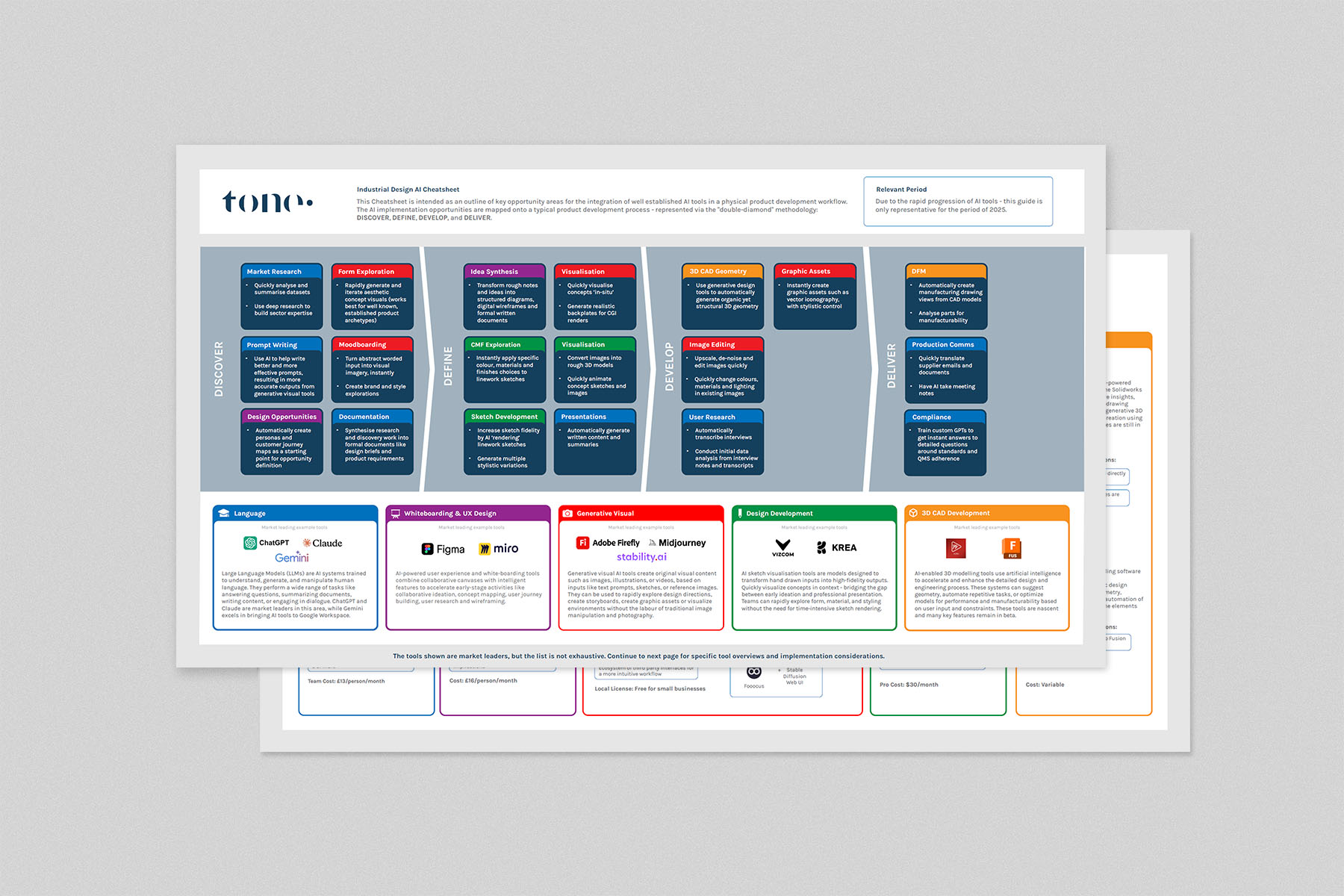If you’re building physical products in 2025, AI isn’t a nice-to-have, it’s an efficiency layer across your entire workflow. However product teams, especially those working in regulated sectors, need to consider much more than what happens to be the latest shiny tool to hit the market. It’s critical to think about the long term suitability of the suppliers, alongside legal factors like copyright and IP protections. That’s why we’ve created a two-page Industrial Design AI Cheatsheet that shows, at a glance, where to apply AI from first research through to production comms.
Why this matters now
AI tooling is evolving quickly. Our cheatsheet focuses on market-leading options that deliver immediate wins while balancing confidentiality and commercial realities. It’s intentionally pragmatic (and not exhaustive), and it reflects the current state of play for 2025.
How to use it
-
Identify the pain point in your current phase (e.g., synthesising interviews, sketch finishing, render variations, supplier comms).
-
Match it to the relevant AI tasks on the map, then shortlist tools from the category panel on page 2.
-
Sanity-check the implementation notes—especially IP ownership, privacy settings, and team plans, before rollout.
👉 Download the cheatsheet (PDF) and share it with your team. If you’d like a walkthrough or help putting together a strategy for your programme, we’re happy to advise.
What’s inside
-
A visual map of AI opportunities across the double-diamond: user & market research, prompt writing, moodboarding, sketch iteration, CMF exploration, visualisation, 3D/CAD, DFM, compliance and more. The diagram on page 1 highlights the highest-leverage tasks in each phase.
-
A tool-by-tool overview on page 2 with quick implementation considerations, e.g. privacy/IP, indemnification, maturity, and typical plan types, so you can pick the right option for your context.
Categories covered (with example tools)
-
Language/LLMs:For briefs, research synthesis, notes, and structured docs.
-
UX & Whiteboarding: For faster ideation, journey maps, clustering and wireframes.
-
Generative Visual: For moodboards, storyboards, backplates, and style exploration.
-
Sketch Visualisation: To turn linework into high-fidelity concept visuals and rapid variations.
-
3D/CAD Features: For generative geometry, automated drawings, and manufacturability checks.

Want to know more?
Tone is a London based creative product design agency. If you’d like to talk to us about what we do or tell us about a new project, send us an email at:
We’d love to hear from you.
Read more of our news
How Strategic Product Design Can Help Overcome Rising Production Costs
The re-opening of the economy has also brought it’s challenges. For product businesses, these are manifesting themselves in higher manufacturing and transport costs. While these pressures are likely to settle down over time, product designers can and should factor the commercial environment into their thinking, and find creative ways to reduce business costs without compromising on innovation.
Read more